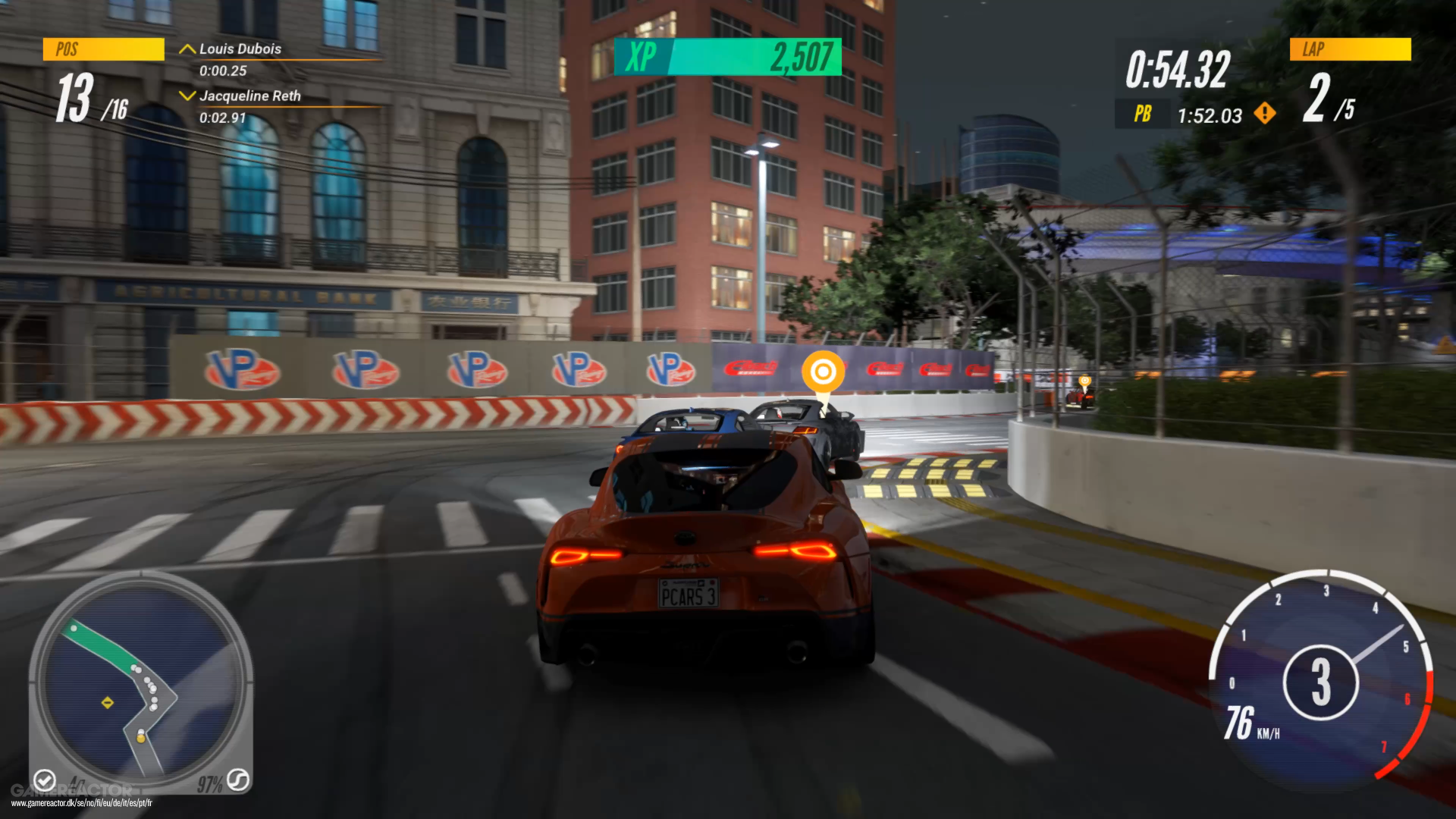

On one occasion I was beaten by a jerk AI driver who (illegally) didn’t make his mandatory pit stop until the last lap of a race and won by passing the finish line in pit lane, but it’s otherwise mostly well behaved. I’ve found myself tagged by passing cars only occasionally and, for the most part, opponents seem pleasingly adept at avoiding race incidents. Low-level opponent AI is quite nervous off the start line but, in general, all opponents display good situational awareness and are satisfyingly aggressive without being total bullies.

You can ask Project CARS to be either of these extremes and it will instantly oblige. Project CARS is at its best with evenly matched opponent cars, where every overtake is a small victory and it may take a lap (or several) to set up for a pass, but if you prefer to feel like a hero and blast past the whole pack in two laps from last place on the grid you can do that too. Racers like the Forza Motorsports series traditionally offer similar scope to increase or decrease the overall challenge before races, but the implementation here is markedly more elegant and nuanced. Settled on a satisfying level of challenge but need a little more race time on a short track to realistically challenge for top spot? Increase the amount of laps for this event. Find yourself out-qualifying the pack by several seconds? Maybe dial the AI up a few notches until they’re on par with you. The AI operates on a slider from zero to 100, which gives you the freedom to find a sweet spot that matches your ability. What I like most, however, is the way Project CARS allows us to fine-tune the overall AI difficulty and race length before every single session. Do you play with a steering wheel peripheral and find it distracting to see an on-screen steering wheel too? You can delete the wheel from the dash. Don’t like where the on-screen track map sits on your HUD? Move it somewhere else. Project CARS features all the typical crutches, from braking assistance to stability control, but the options keep coming.


 0 kommentar(er)
0 kommentar(er)
